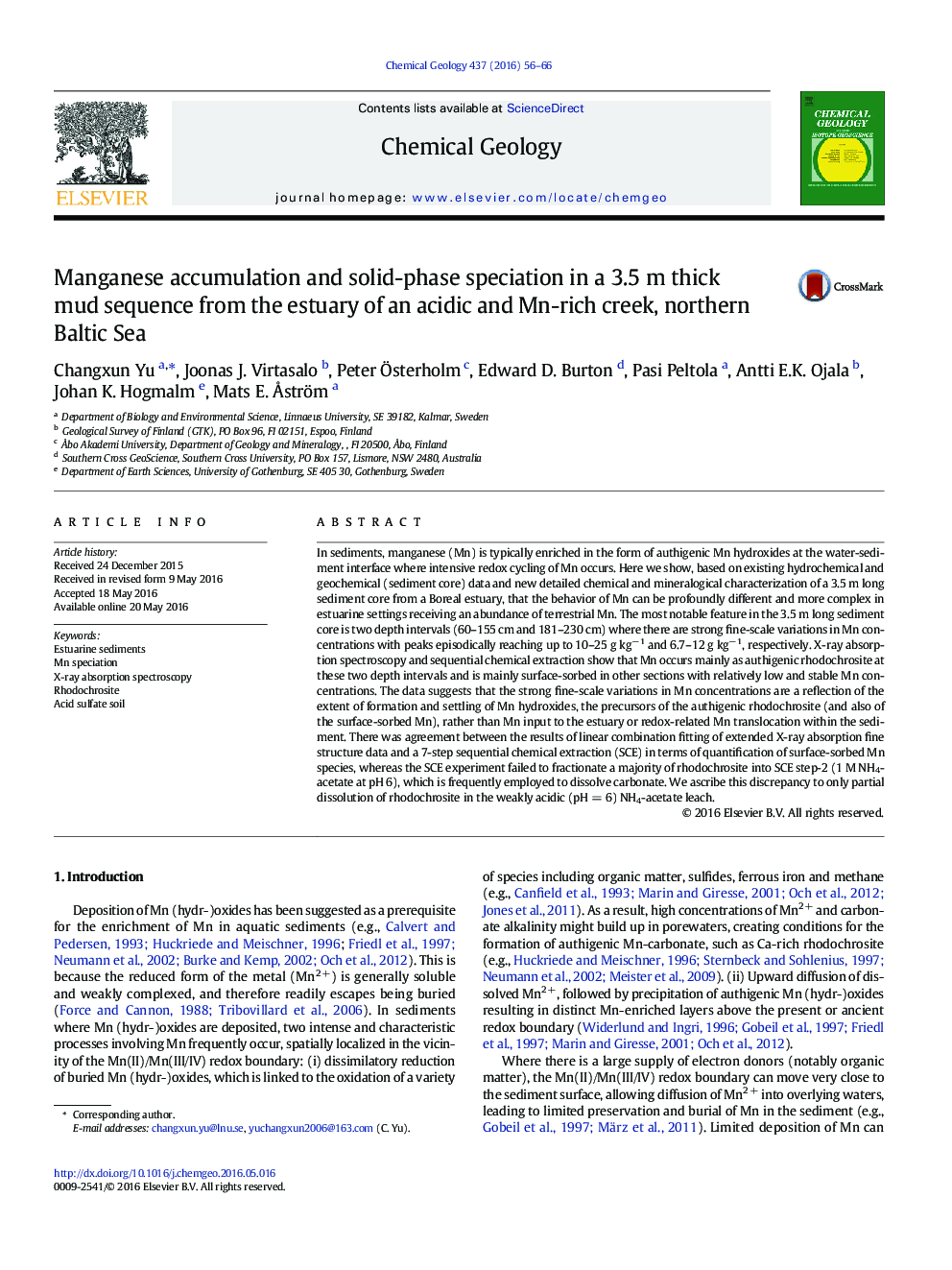| کد مقاله | کد نشریه | سال انتشار | مقاله انگلیسی | نسخه تمام متن |
|---|---|---|---|---|
| 6436081 | 1637537 | 2016 | 11 صفحه PDF | دانلود رایگان |

- We observed a highly variable and episodic Mn distribution in a sediment core from a boreal estuary fed by Mn-rich water.
- Mn concentrations increased episodically in two Mn-enrichment zones (2.3-4.9 to 10-25 g kgâ 1, 1.9-3.9 to 6.7-12 g kgâ 1).
- Mn concentrations are relatively low and stable elsewhere in the core.
- Mn occurs as rhodochrosite in the Mn-enrichment zones, while as surface-sorbed complexes in recent sediments (uppermost 60Â cm).
- The Mn distribution reflects deposition of Mn (hydr-)oxides, rather than input or redox-related translocation of Mn.
In sediments, manganese (Mn) is typically enriched in the form of authigenic Mn hydroxides at the water-sediment interface where intensive redox cycling of Mn occurs. Here we show, based on existing hydrochemical and geochemical (sediment core) data and new detailed chemical and mineralogical characterization of a 3.5 m long sediment core from a Boreal estuary, that the behavior of Mn can be profoundly different and more complex in estuarine settings receiving an abundance of terrestrial Mn. The most notable feature in the 3.5 m long sediment core is two depth intervals (60-155 cm and 181-230 cm) where there are strong fine-scale variations in Mn concentrations with peaks episodically reaching up to 10-25 g kgâ 1 and 6.7-12 g kgâ 1, respectively. X-ray absorption spectroscopy and sequential chemical extraction show that Mn occurs mainly as authigenic rhodochrosite at these two depth intervals and is mainly surface-sorbed in other sections with relatively low and stable Mn concentrations. The data suggests that the strong fine-scale variations in Mn concentrations are a reflection of the extent of formation and settling of Mn hydroxides, the precursors of the authigenic rhodochrosite (and also of the surface-sorbed Mn), rather than Mn input to the estuary or redox-related Mn translocation within the sediment. There was agreement between the results of linear combination fitting of extended X-ray absorption fine structure data and a 7-step sequential chemical extraction (SCE) in terms of quantification of surface-sorbed Mn species, whereas the SCE experiment failed to fractionate a majority of rhodochrosite into SCE step-2 (1 M NH4-acetate at pH 6), which is frequently employed to dissolve carbonate. We ascribe this discrepancy to only partial dissolution of rhodochrosite in the weakly acidic (pH = 6) NH4-acetate leach.
133
Journal: Chemical Geology - Volume 437, 25 October 2016, Pages 56-66